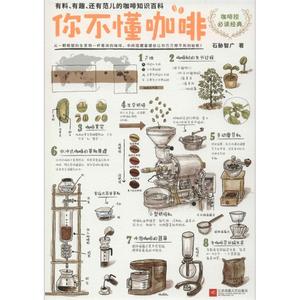Coffee beans raw and cooked-how to mix coffee beans
Coffee beans raw and cooked-how to mix coffee beans
1 quality coffee tasting, basic taste cognition and correction
(2) the origin of coffee culture, the knowledge of flavor from different places, and the appreciation of freshly roasted coffee beans with different flavors from different areas.
3 introduction to coffee in seed-to-cup system, knowledge of coffee processing and coffee roasting
4 the grinding standard of coffee powder and the different grinding methods of different coffee grinders
5 extraction golden rule SCAA gold cup extraction theory and practice, professional coffee extraction knowledge and concept
6. Explain in detail the effect of extraction condition variables on the flavor of freshly baked coffee.
7 judges' grade evaluation WBRC cup test standard and sensory correction
8 WBRC cup score table to establish coffee flavor database
9. Explain the use of SCAA and COE coffee cup testing methods
10 explanation, production method and operation of Italian mocha coffee
First of all, it is not the same time point and temperature point when every bean reaches a certain baking degree. Because the water content, size, and the softness and hardness of beans will all be due to the phenomenon of uneven baking, the professional point is that the specific heat of coffee beans is different, and the concept of specific heat generally refers to the heat energy required for coffee beans to increase by 1 degree Celsius. With different water content, the particle size of beans is different, although they are all heated with the same heat, but because of the different specific heat, the baking degree is easy to be different, resulting in uneven quality. In the words of teacher Taguchi, it is a miracle that different kinds of beans can be baked evenly together.
Give an example to illustrate the difference in baking degree caused by different specific heat. The concentrated beans used in our store pursue the high sweetness of the front, slightly sour in the middle, and the flavor of nuts and chocolate in the back. The mix is made in a certain proportion of Brazil, Kenya and Mantenin. I use the cooked bean matching method, which means that a single bean seed is baked first and then blended. During the baking process (the temperature displayed varies according to the design position of the baking furnace and probe) the temperature of the first explosion in Kenya is about 192 degrees Celsius, and the temperature of the second explosion is about 218 degrees Celsius. Mantenin's first explosion is about 196 degrees Celsius and the second explosion is about 220 degrees Celsius, while the temperature at which Brazil enters the explosion will be the highest, with the first explosion reaching about 202 degrees Celsius and the second explosion around 228 degrees Celsius.

Important Notice :
前街咖啡 FrontStreet Coffee has moved to new addredd:
FrontStreet Coffee Address: 315,Donghua East Road,GuangZhou
Tel:020 38364473
- Prev

Papua New Guinea Coffee Flavor description Grinding scale Taste treatment Variety producing area
Papua New Guinea Coffee Flavor description Grinding scale Taste treatment Variety producing area Papua New Guinea has a detached and primitive natural environment and a vast and fertile land. Its unique volcanic rock soil and abundant rainfall create excellent natural conditions for the growth of coffee. The top coffee beans in Papua New Guinea are as beautiful and precious as the country's national bird of paradise.
- Next

The processing method of Danqi Meng Coffee introduction to the Environmental production area of Cooperative planting Manor
Beans taste different according to the region where they grow. The factors that affect the taste are the variety of coffee trees, the soil properties of growth, the climate and altitude of the cultivation garden, the care of picking results, and the process of bean treatment, etc. These elements vary from region to region, while bakers and integrated manufacturers look for the characteristics of each region, so that the comprehensive products have their own unique typical flavor. You can try to chase.
Related
- Guji coffee producing area of Guji, Ethiopia: Humbela, Shakiso, Wulaga
- What is the most expensive variety of Qiloso in BOP multi-variety group?
- How to store the coffee beans bought home?
- Why are Yemeni coffee beans so rare now?
- Ethiopian Sidamo all Red Fruit Sun Sun Santa Vini Coffee beans
- SOE is mostly sour? What does it mean? Is it a single bean? what's the difference between it and Italian blending?
- Is Italian coffee beans suitable for making hand-brewed coffee?
- How to choose coffee beans when making cold coffee? What kind of coffee beans are suitable for making cold coffee?
- Just entered the pit to make coffee, what kind of coffee beans should be chosen?
- Can only Japan buy real Blue Mountain Coffee? What are authentic Jamaican Blue Mountain coffee beans?

